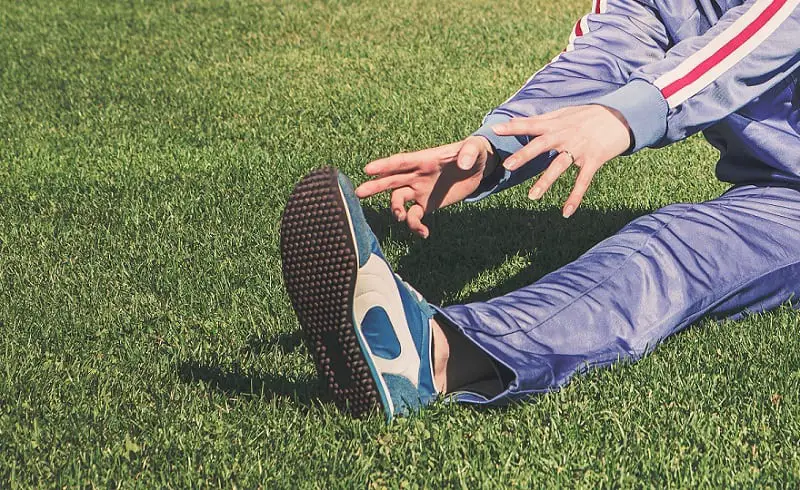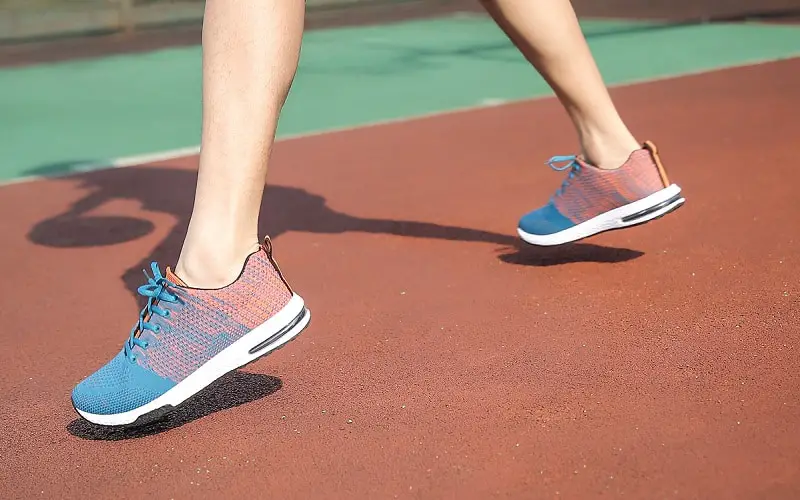Which is longer? Your big toe or your second toe? The answer may mean the difference between being a sprinter and a mere jogger. Humans show an enormous variation in foot size, shape, and width. Variously sized and shaped feet offer certain advantages when it comes to certain activities. Are wide feet good for sports?
If your wide feet are a matter of genetics, they’re perfectly fine for sports. Sometimes, foot width is caused by deformities or medical conditions that can affect your health and athletic ability. Athletes with wider than usual feet need to pay special attention to proper shoe size and support in order to succeed.
There are half a dozen factors that can contribute to wide feet, some of which have implications for athletic performance. But how do you know you’ve got wide feet anyway? And what does the American Podiatric Medical Association say to athletes with wider than usual feet? Here’s what you need to know.
The Athletic Implications of Feet
There are anatomical variations in people’s feet that can give some people advantages over others. For example, if you’re in the minority with a big toe longer than your second toe, that variability will help you if you happen to be a sprinter or a skier. When skiing, carving an edge will be easier. When sprinting, you’ll have more leverage when pushing off.
If you have unusually flexible feet, the cycle of supinating and pronating within the foot’s anatomy can mean 10 minutes over the distance of a marathon or a couple of seconds over 440 meters.
Different body mechanics can mean different athletic results. There are no specific athletic advantages to wide feet, but plenty of things to keep in mind if you’re an athlete with feet wider than usual.
What Causes Wide Feet?

There are six factors that can cause some people to have wider feet than others: genetics, age, deformities, improper footwear, pregnancy, and edema (swelling).
Genetically, some people are just born with flatter or wider feet, though feet do tend to get naturally wider and longer as you age. That’s because ligaments and tendons tend to loosen with age.
Deformities, which improper footwear can contribute to, like bunions, calluses, and hammer toes can result in wider than typical feet.
The hormone relaxin — present in pregnant women — contributes to wider feet by loosening the joints and ligaments around feet.
Swelling, which can be caused by injuries, fluid retention, and injuries, will also temporarily make your feet wider.
If you’ve been genetically gifted with wide feet, those feet aren’t going to boost or inhibit your athletic career — though how you care for those feet and the shoes and equipment you wear might affect your performance.
If you have normal feet, but they’re temporarily wider than usual because of one of these other causes, then your ability to participate in sports may be affected by the same thing that’s widening your feet. Deformities, improper footwear, hormone changes, injuries, and swelling are all things that can affect your athletic performance, not just your foot width.
How to Find Out if You Have Wide Feet?
Feet don’t run off an assembly line; there’s a natural variation to everyone’s. There’s even variation in the length of feet from one foot to the next on the same person.
The shoe industry has developed standardized sizes for men and women that take length and width into account. For example, a narrow U.S. women’s size 5 shoe fits a foot that is 2.81 inches across. Width’s go up: B, C, D, E, and beyond. The same applies for men.
Until you’re ready to go to a podiatrist — more on that to come — you can determine for yourself whether or not you have wide feet. How?
- Don’t do this during the day since your feet expand in the daytime; wait until night time
- Take off your shoes
- If you wear socks with your shoes, put a similar pair of socks on
- Stand on a piece of paper, and trace all the way around one foot with a pencil
- At the widest point of your foot, measure the width
- Go to the sizing chart for women or men
- Find your shoe size down the left-hand side of that chart
- Slide your finger to the right until you come across the measurement you just made
- Once you find your measurement, look at the label at the top of that column. That’s your foot width.
Here’s a suitable sizing chart for men and one for women to determine your foot width.
The Most Important Thing for People With Wide Feet to Remember
What’s the most important thing that people with wide feet should remember? Wear shoes that fit properly. A July 2018 article in the Journal of Foot and Ankle Research called “Incorrectly fitted footwear, foot pain and foot disorders: a systematic search and narrative review of the literature” found that up to 72 percent of people wear shoes that don’t fit their feet depending on length or width.
Some portion of those 72 percent of people are most likely athletes. If they’re wearing the wrong size or type of shoes, their performance is going to underwhelm… and it’ll have nothing to do with the width of the feet, just the shoes they’re wearing.
People with wide feet often complain about discomfort and issues like bunions, calluses, crossover toe, and hammer toe. Those sources of discomfort are caused by improper footwear, not the width of the feet themselves (unless you’re one of those people who’ve suffered an injury or hormonal change resulting in temporarily wider feet).
How Athletes With Wide Feet Should Choose Shoes

Do you know what size your feet are? You may think that you do based on which shoes are the most comfortable or look the best on your feet. But those aren’t the only criteria when choosing footwear for the strain that each sport will place on your anatomy.
Every sport has different demands. The American Podiatric Medical Association (APMA) recommends that all people who play sports have their feet professionally measured by a podiatrist so they can help you find a shoe that’s the right size.
Once you know your shoe size, the next step is to choose the appropriate type of shoe for your sport. From waking to sprinting to golf to football and all the rest, one sport’s shoe is not like any other. You’ll open yourself up to injury and disappointment if you wear the wrong shoe to participate in your sport.
The APMA says that, if you’re at the point where you’re playing your sport more than twice a week, you’re a serious enough athlete to justify investing the time in a shoe specifically designed for your sport, the support you need, and the types of injuries you might face.
Once you know your actual shoe size thanks to your friendly neighborhood podiatrist, how can you choose the appropriate sport-specific shoe to maximize your performance and minimize the risk of injury?
The APMA has produced a useful guide for selecting shoes for a wide variety of sports, taking things like common sport-specific injuries and the ideal construction and support into account.
